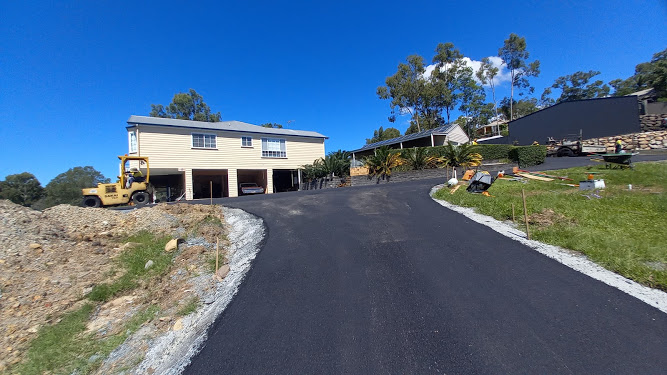Why do you need a New Driveway?
Your driveway is essential to the overall aesthetics of your property. Even if you have a lovely home, a dull, neglected, and broken driveway can instantly detract from any positive impression. While driveways can undoubtedly last for decades, exposure to oil leaks, adverse weather conditions, debris, erosion, and the weight of automobiles can gradually deteriorate their surface material.
That is why it is essential to recognize the indicators of a deteriorated driveway before posing a liability to your home.
In this blog, we’ll examine five signs that it’s time to hire a driveway expert.
Surface cracks
It’s not uncommon to discover cracks in your concrete and asphalt driveways over time. Cracks less than a quarter-inch wide should be repaired quickly to prevent further damage. It is important to keep in mind that any driveway repairs made to correct this issue may appear darker in comparison to the surrounding pavement, making the repairs highly noticeable. This will affect the aesthetics of your driveway and your home. If your driveway begins to develop an excessive number of cracks, consider a complete driveway replacement.
While minor cracks can generally be mended, larger, deeper, and broader cracks frequently indicate the need for replacement. Hazardous chemicals such as gas, oil, and salt can easily penetrate a weakened driveway, causing more damage by deepening the cracks. Additionally, these openings deteriorate during the winter as the freezing and thawing water extends the damaged surface. In these instances, it is advised that you completely replace your driveway.
Potholes are more visible
Potholes are one of the most obvious signals that your driveway needs restoration or repair. They form when cracks are left unattended for an extended period. The expansion and contraction of water beneath the pavement can weaken the driveway materials. Even minor potholes are repaired; they may reappear if the expansion and contraction problem is not addressed. This is why most homeowners choose to rebuild their entire driveway rather than invest in repairs that can cost as much as a full replacement.
Drainage issues
A well-designed driveway includes at least one form of drainage. However, if you notice rainfall gathering in many locations or pouring down the center of your driveway, you certainly have drainage concerns. Pooling and puddling can damage the surface’s integrity, but they can also rapidly turn your driveway into a serious safety concern. If you do not wish to replace your driveway, there are several other solutions. You might install strip drains, add curbing, or even replace the drainage plumbing, depending on the condition of your driveway.
Weathered appearance
Faded driveways are common in Australia, given the severe climate. However, if your driveway is beginning to show a little worse to wear, it may be time to consider replacing it. UV radiation, oxidation, and prolonged sun exposure can all contribute to the surface of your colored concrete driveway becoming patchy, unattractive. While there is nothing wrong with a faded driveway, the majority of weathered driveways are also more unstable and prone to damage. A concrete sealant is a temporary fix for improving the appearance of your driveway.
An advanced age
Most asphalt driveways have a 15 to 20-year lifespan on average. On the other hand, concrete driveways have a lifespan of up to thirty years. However, many other factors can affect that number, such as weather conditions, UV rays, the presence of harmful chemicals, and driveway usage. That’s why your driveway’s lifespan can vary considerably. If your driveway has seen better days, you may be dealing with several concerns. Repairs may be ineffective at this point. A new driveway with newer, stronger materials will do the trick.

